Providing mental health and wellness education from the classroom to the living room.
Learning through stories directly impacts physical health, academic achievements, relationships and safety.
.png?width=400&height=400&name=H1Image_iMPACTFUL%20(1).png)
The Creative Coping Toolkit (CCT) is an award-winning film and evidence-based mental health program that breaks down complex topics and includes science backed strategies, brain-hacks and practical tips to support positive, personal agency, and community well-being.
The programs interweave compelling personal stories from educators, youth, and families with expert perspectives from mental health professionals, pediatricians and technologists.
Learn more about how we address anxiety, bullying, belonging, online safety, digital citizenship and how to safely be an upstander.
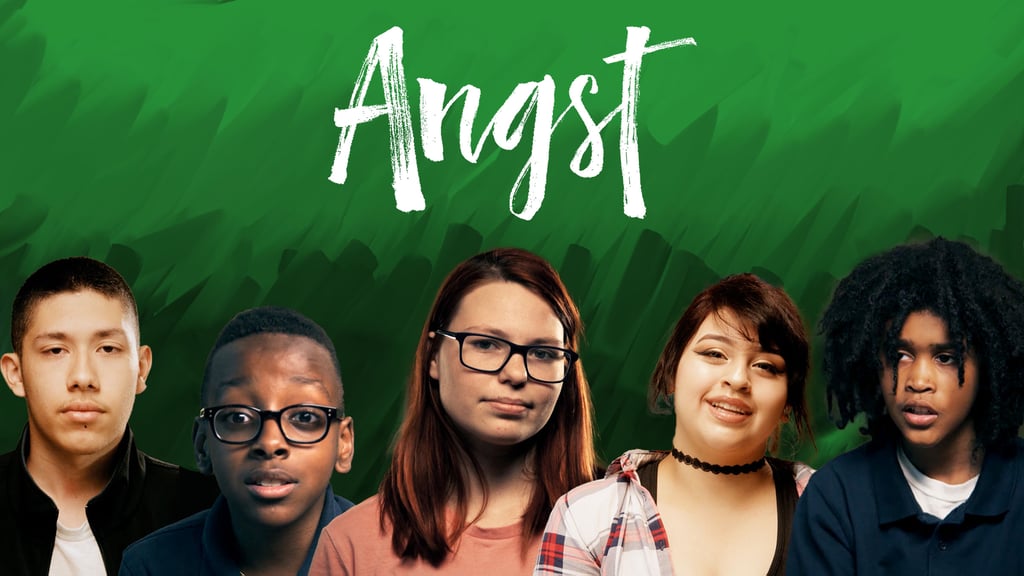
The Angst Film Program
Angst raises awareness and opens up the conversation about anxiety, helping people understand and manage their symptoms and learn when and how to ask for help.
This hopeful and inspiring film program has reached over 2 million people worldwide —working to de-stigmatize and normalize talking about mental health. The core goals are to help people recognize the symptoms, give them coping tools, and encourage them to reach out for support.
By teaching Angst in the classroom, you will enable students to:
-
Identify and understand terms, definitions, signs, and symptoms of anxiety after watching the Angst film.
-
Remember, vocalize and practice positive solutions to negative thoughts, negative self-talk, and worry.
-
Feel encouraged to push aside subconscious perceptions of the stigma of mental health, so students can reach out for help, or to those around them who are struggling.
-
Understand the relationship between brain science and anxiety.
-
Use stress-management strategies to better help themselves and others with anxiety, including mindfulness, breathing, gratitude, empathy and basic exposure therapy.
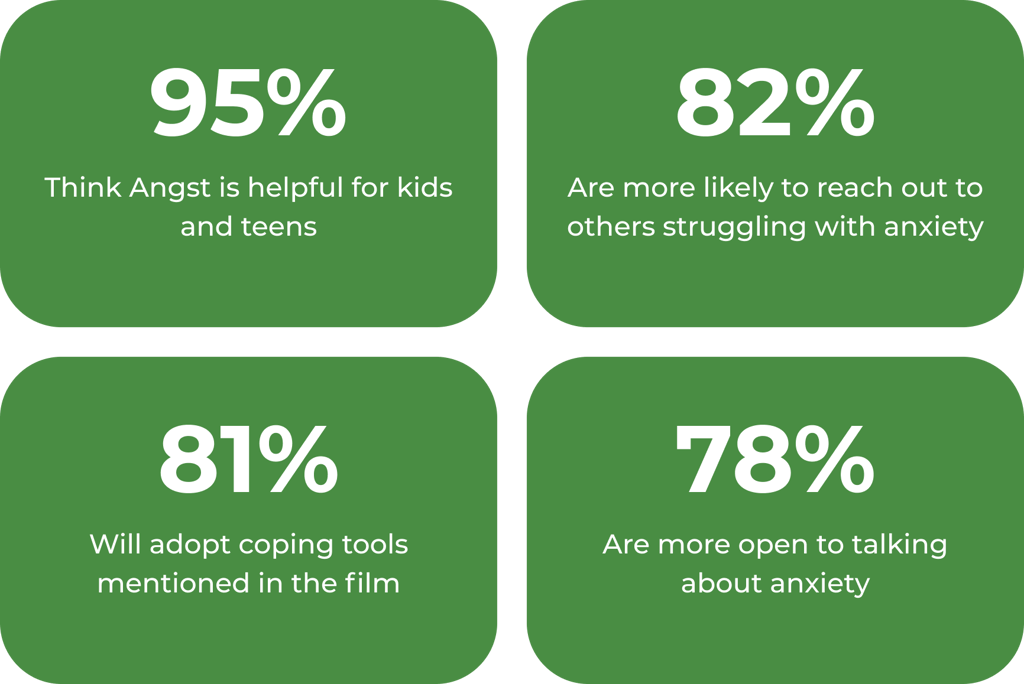
"My county serves children of all demographics including those in poverty. Angst is not only appropriate but needed because it offers practical tips that are accessible to all. The film helps them understand the brain science behind anxiety symptoms and to be equipped with healthy tools that empower them."
Dr Tinisha Parker
American School Counselor Association Chair
"I think this is the single most important mental health film I have seen in my lifetime. I think that every single school in Australia should have this as a mandatory viewing."
Michael Carr-Gregg
Adolescent psychologist, leading authority on teenage behavior
“So glad my dad got to see this movie. Now he knows I'm not making it up.”
9 Year Old Student
Chicago, IL
“Angst is inspirational; the courageous effort made by teens in the film to face their fears and become competent in coping is heart-warming and breath-taking."
Dr. Laura Kastner
Child Psychologist, Author
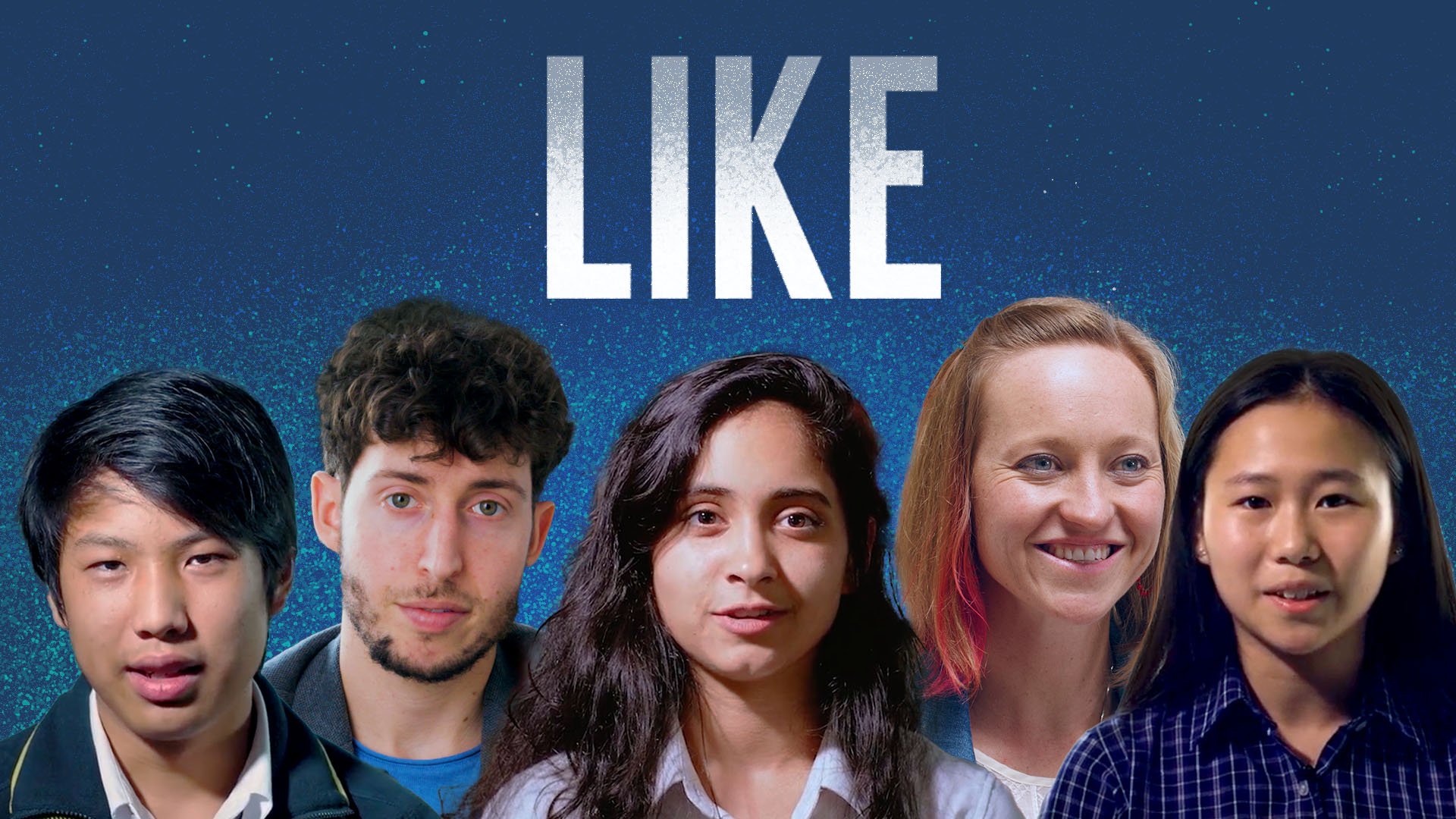
The LIKE Film Program
LIKE explores the addictiveness of social media and the role and impact of technology in our lives.
The film provides easy-to-implement ways to transform our behavior so we can create a healthy balance with our devices—and think about how best to engage thoughtfully and authentically when online. Recently added is our new Digital Citizen Program - LIKE 101. Check out how fun and easy it can be to hack our brains and disrupt our relationship with technology.
By teaching LIKE in the classroom, you will enable students to:
- Understand just how much the organizations behind social media platforms are able to understand and tailor content to influence their users (the ‘Echo Chamber’ effect).
- Appreciate how common Fake News has become, share information about how it proliferates and apply tips to identify and evaluate source credibility.
- Establish habits to encourage vigilance around online safety.
They will also learn to apply tools and strategies for:
- Self regulation with social media
- Managing FOMO (fear of missing out)
- Authentic Posting on social media
- Maintaining a positive social media presence in their own profile and feed
Students will also understand the connection between personal values and a positive social media experience.
-
Use stress-management strategies to better help themselves and others with anxiety, including mindfulness, breathing, gratitude, empathy and basic exposure therapy.
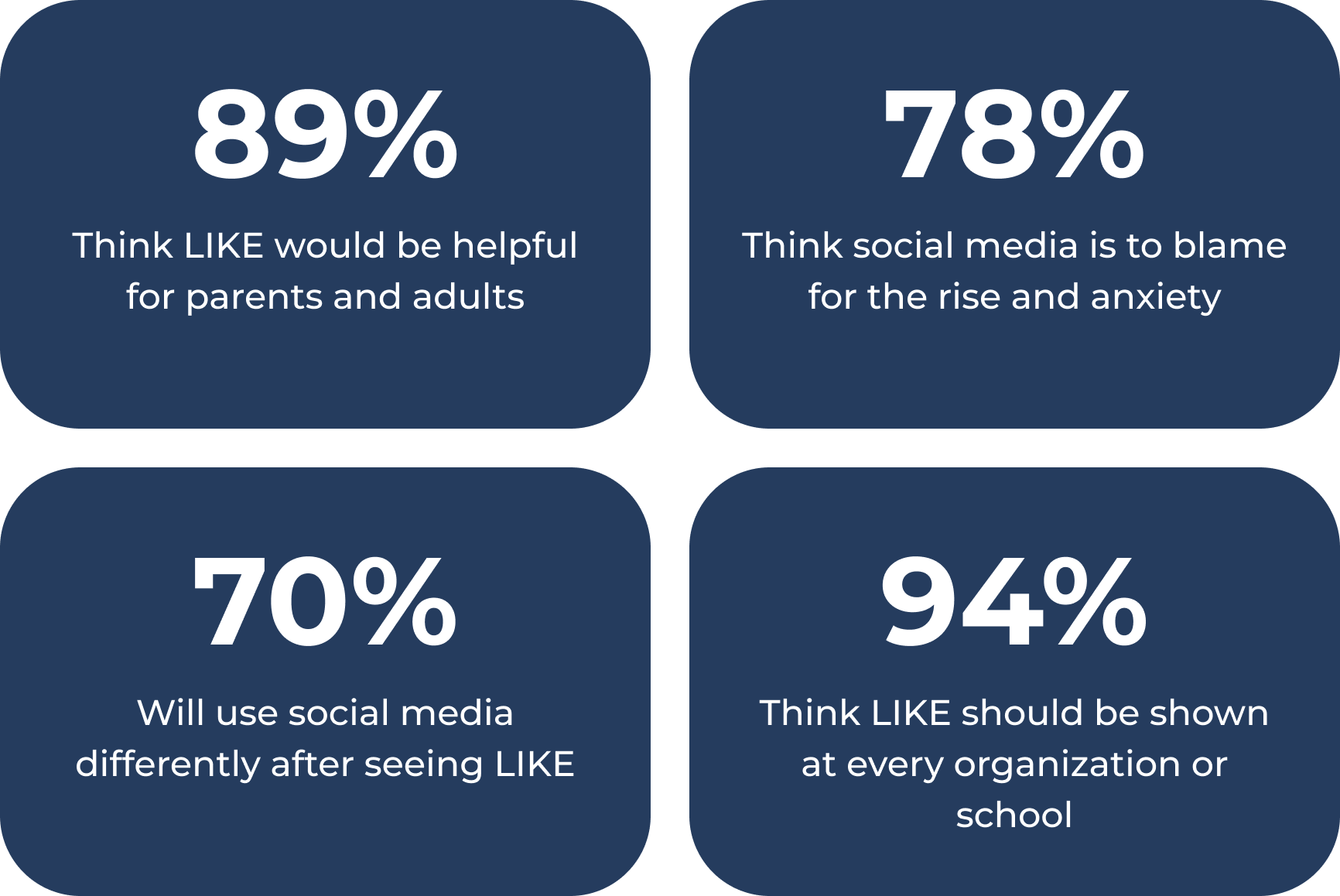
“I am shocked at how moved, upset, and compelled to act I feel as a result of having seen this documentary. That LIKE will inspire you is an understatement. Quite simply, it's the most important film I've ever seen.”
Dr. Joe Dilley
Psychologist & Author
"LIKE is truly an incredible film depicting the unsettling reality of technology addiction within teenagers. The filmmakers do a wonderful job bringing in different viewpoints, stories, and scientific data... I absolutely recommend LIKE to every student, parent, or educator... 10/10!"
Jenna Fondren
Safe School Institute Manager, Crime Stoppers of Houston
"...an important inquiry into the double-edged sword that social media has become for young people today..."
Vicki Harrison
Program Director, Center for Youth Mental Health, Stanford Department of Psychiatry & Behavioral Sciences
"LIKE is an important resource for schools and families to understand what's at stake, and to take proactive steps to ensure that students maintain a healthy attitude towards their digital behavior."
Stephanie Humphrey
Tech Contributor to ABC News
.jpg?width=1920&height=1080&name=UpstandersTitleCard%20(1).jpg)
The Upstanders Film Program
The Upstanders teaches about the power of connection and resilience to end bullying behavior, both online and in person.
This film shows the importance of empathy, self-care, and reflection to transform attitudes and actions. It teaches how to become an ‘upstander’— someone who stands up for others in a kind and compassionate way.
By teaching The Upstanders in the classroom, you will enable students to:
- Understand the importance of being an upstander, identify examples of bystanding, and apply active strategies to become an upstander.
- Understand and apply strategies to promote resilience and wellbeing – both for themselves and others – and demonstrate the connections between affirmations, comfort strategies, and feelings of well-being.
- Become familiar with techniques of mindfulness for mental health and resilience, including the ability to apply strategies to reduce anxieties by focusing on the present.
- Explore the importance of communication and its relationship to mental health, how to improve understanding of emotions and moods, and how to reach out and share their feelings with others.
- Explain how dopamine, oxytocin, serotonin, and endorphins affect our emotions and reactions to others, and what they can do to replenish these natural mood enhancers.
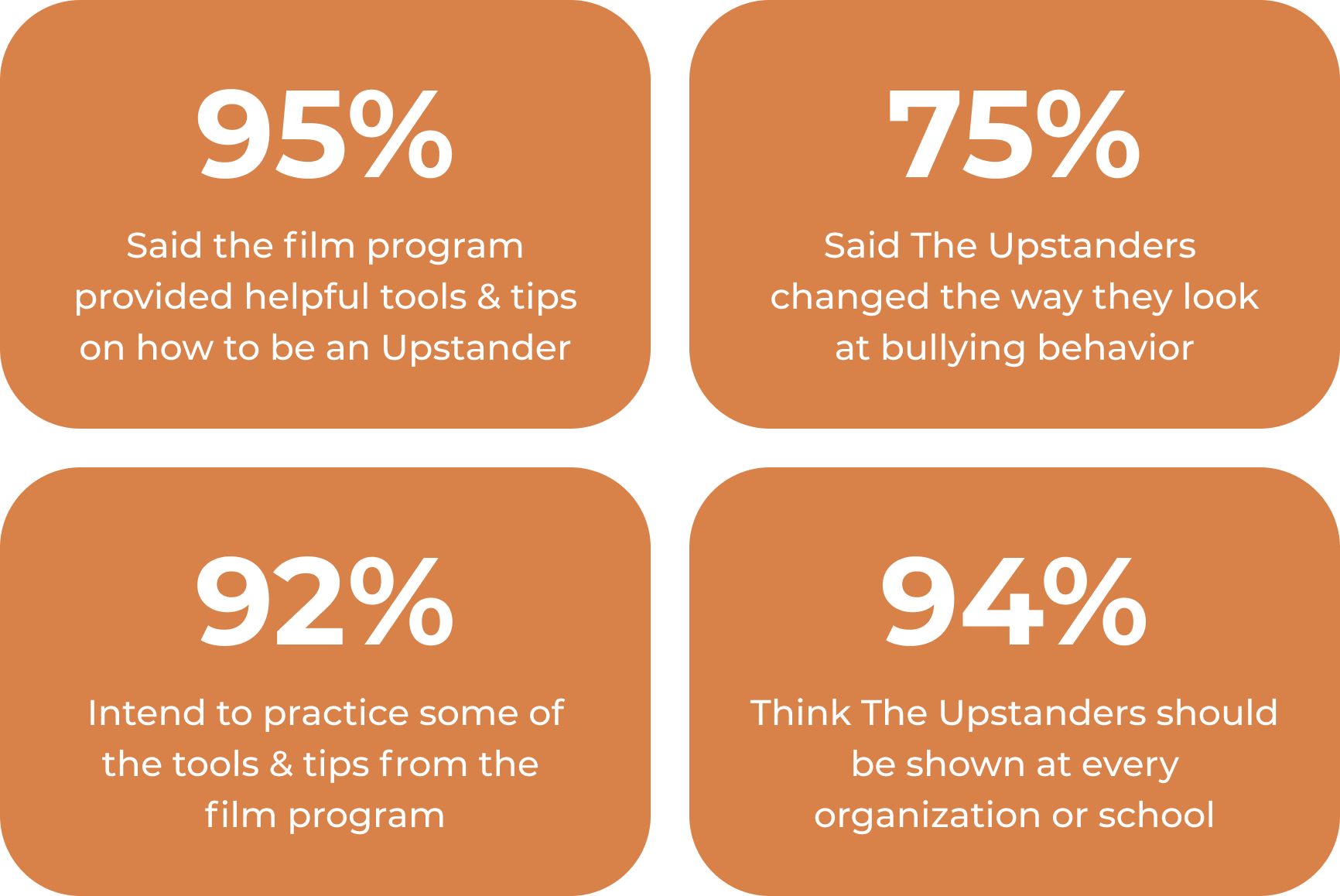
"What struck me is that we need a cultural shift in our school. I feel like we need to start emulating what we saw in the film – celebrating kindness, rather than consequences for mean behavior."
Teacher
Middle School
"I’ve seen a lot of movies about bullying. But the focus on brain science and how bullying has evolved was very interesting and made me think differently."
Student
6th Grade
“This movie helped show me that I’m not alone. It made me feel more comfortable to speak up.”
Bobbie W.
Age 13
“As a parent, it really made me reflect on my own behavior. In my job, I worry that maybe what I feel is assertiveness and confidence might be more akin to bullying. This was a wakeup call to look in the mirror.”
Marnie C.
Parent
.jpg?width=1920&height=1080&name=RTBHTitleCard%20(1).jpg)
The RACE to Be Human Film Program
RACE to Be Human explores the confusion and apprehension so many of us feel when discussing race and racism. It includes meaningful strategies and tools for how we can personally and collectively create united communities defined by curiosity, empathy, and resilience.
By teaching RACE to Be Human in the classroom, you will enable students to:
- Identify and understand definitions and key terms used in conversations around race, racism, privilege, and belonging.
- Recognize the impact of language and word choice on how we interact with and affect others.
- Learn thoughtful ways to share their perspectives, identities, and experiences, as well as how to respectfully listen and learn from others.
- Deepen empathy and compassion through the listening of personal narratives and life stories in the film, and then in their own school community.
- Consider how pop culture and media influences our understanding of identities, cultures, and communities. Then, how to question the validity of these, oftentimes stereotypical, stories.
- Feel encouraged to reflect on their privilege(s) and create meaningful change in their own communities through acts of allyship.
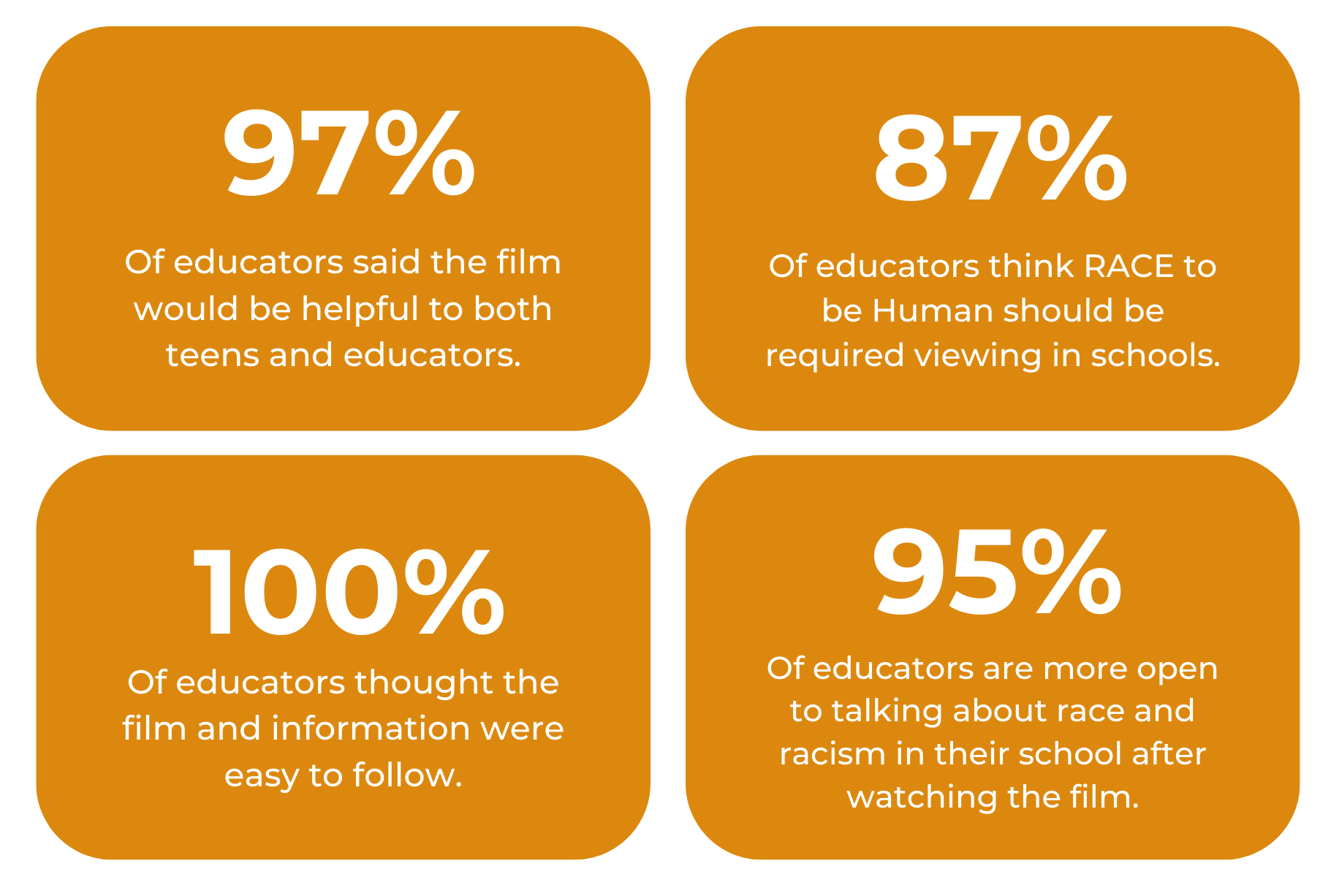
“Powerful film. From start to finish, this film had me thinking about myself, my students, my S.O, and my children. It had me thinking about the past, the present, and the future of society."
Counselor
American School Counselor Association
“As someone who is mixed/bi-racial, this movie really made me feel represented... Hearing mixed-race people share their feelings of guilt and their experiences with micro-aggressions was truly validating and it made me feel seen. Thank you.”
Student
Robbins Hebrew Academy
“This is a powerful film. It’s impossible to watch and not feel like you’re having a mirror held up in front of you... This is an important tool for self-reflection when it comes to experience about race."
Brett Copeland
Principal
“I really liked the documentary. I liked it because, instead of just having one white person talking about everyone's stories, people of different races were telling their OWN stories.”
Student
Grade 6